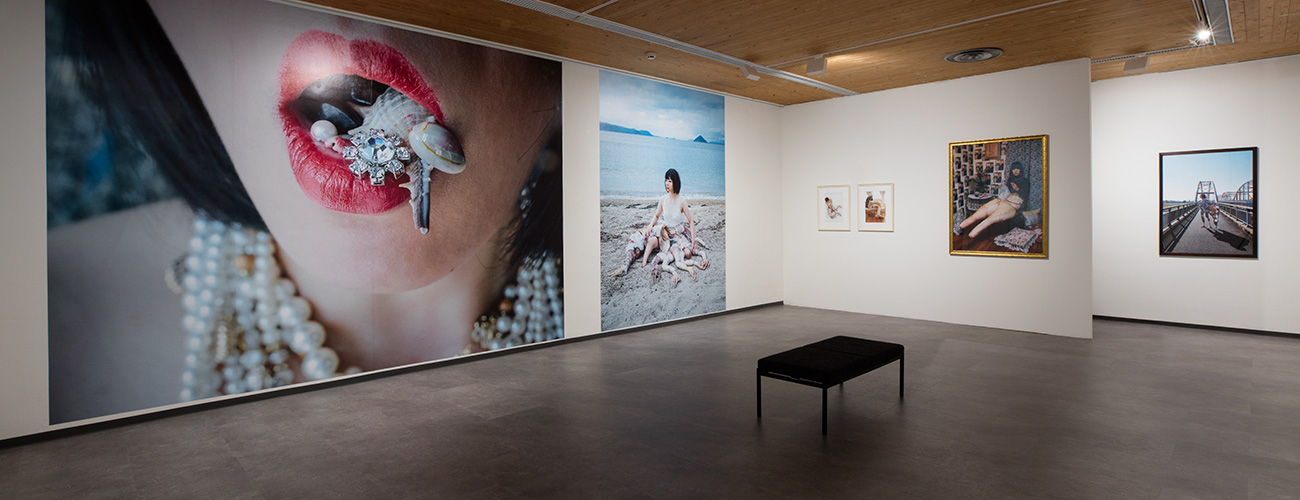MARI KATAYAMA
The art and biography of Mari Katayama are directly intertwined. Suffering from congenital tibial hemimelia, Katayama had both legs amputated when she was nine. After entering the Tokyo Art School at the age of 23, Katayama developed a deep reflection on identity as a relationship between the body and the interiority of the person. In her numerous photographic self-portraits she has presented her own body as a living sculpture equipped with embroidered objects and decorated prosthetic limbs.
The exhibition at the Pori Art Museum is Katayama’s first solo show in Finland, and an intense and concentrated introduction to her photographic oeuvre. Bringing to the fore her own body as a chiasma of different configurations, Katayama’s photographs constantly rearticulate the perception of the singular existence of the artist and of the human body.
The self-portraits show the artist in a variety of domestic and private situations among intricately embroidered objects, and accompanied by prosthetic legs of various kinds. Some of the latter are functional, others are designed to refashion the artist’s body with decorative accessories.
Katayama interrogates the viewers by confronting them with staged and mundane scenes, in full light or in shadow, in the public space and in intimate scenarios, in which fixed social and cultural norms of able-bodiedness are exposed to be challenged and redefined. Expanding the freedom of choice for the disabled, Katayama’s “High heel project” provides amputees with customized prosthetic high-heel shoes to be used on stage while performing as a singer, model or keynote speaker. Using her body as the site where representations of diversity and identity are inscribed, Katayama explores the tensions between her lived bodily experiences and normative expectations of a functional human body.
During a stay in Naoshima, an island in the Seto Inland Sea in southern Japan, Katayama became aware of Naoshima Onna Bunraku, an all-female style of traditional puppet theatre, in which the dolls don’t have legs and use elbows and hands movements to express themselves instead. For the series bystander, featured the exhibition, she photographed hands, printed them on materials and sewed them together to create a multi-armed, many-handed entity with her own body in the middle. The photographs of Katayama sitting and lying on the beach, with the arms and hands of this hybrid creature sprouting from her own like the legs of a sea, seem inspired by a canon of beauty dating back to Sandro Botticelli’s Renaissance masterwork The Birth of Venus. But it is a canon updated to the present time, to an idea of beauty and perfection that Katayama ascribes to every body and every possible variation and mutation of the human figure, thus giving her art a universalistic and emancipatory tone.
Katayama appears to be reaching after something so profoundly human that her photographic works would be legible to people from different cultures and historical epochs, as they will be to future generations. What they make visible is an experience or feeling that is recognizable across identities and backgrounds while remaining specific to Katayama’s own interpretation of life.
//
Image:
Mari Katayama © Mari Katayama courtesy of Akio Nagasawa Gallery
